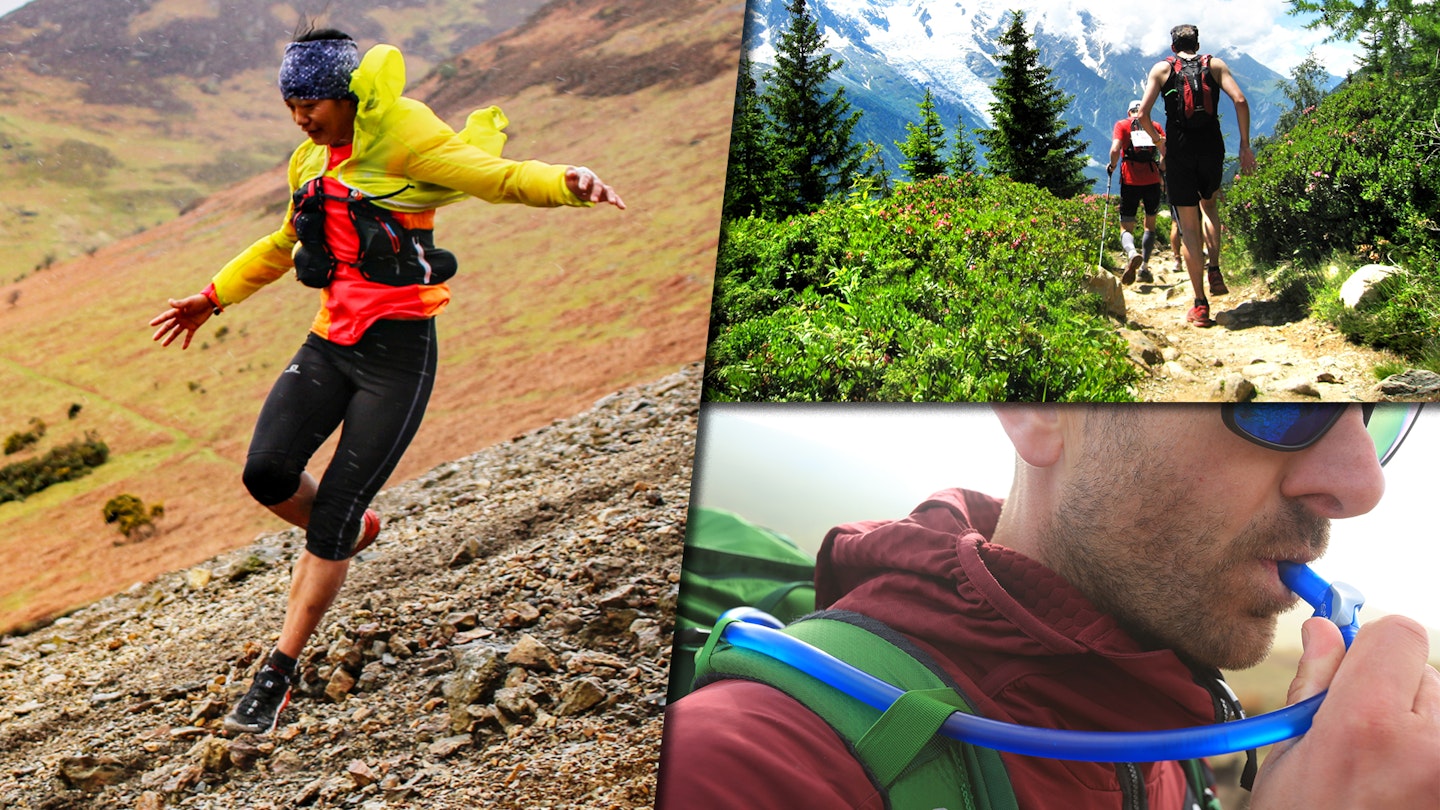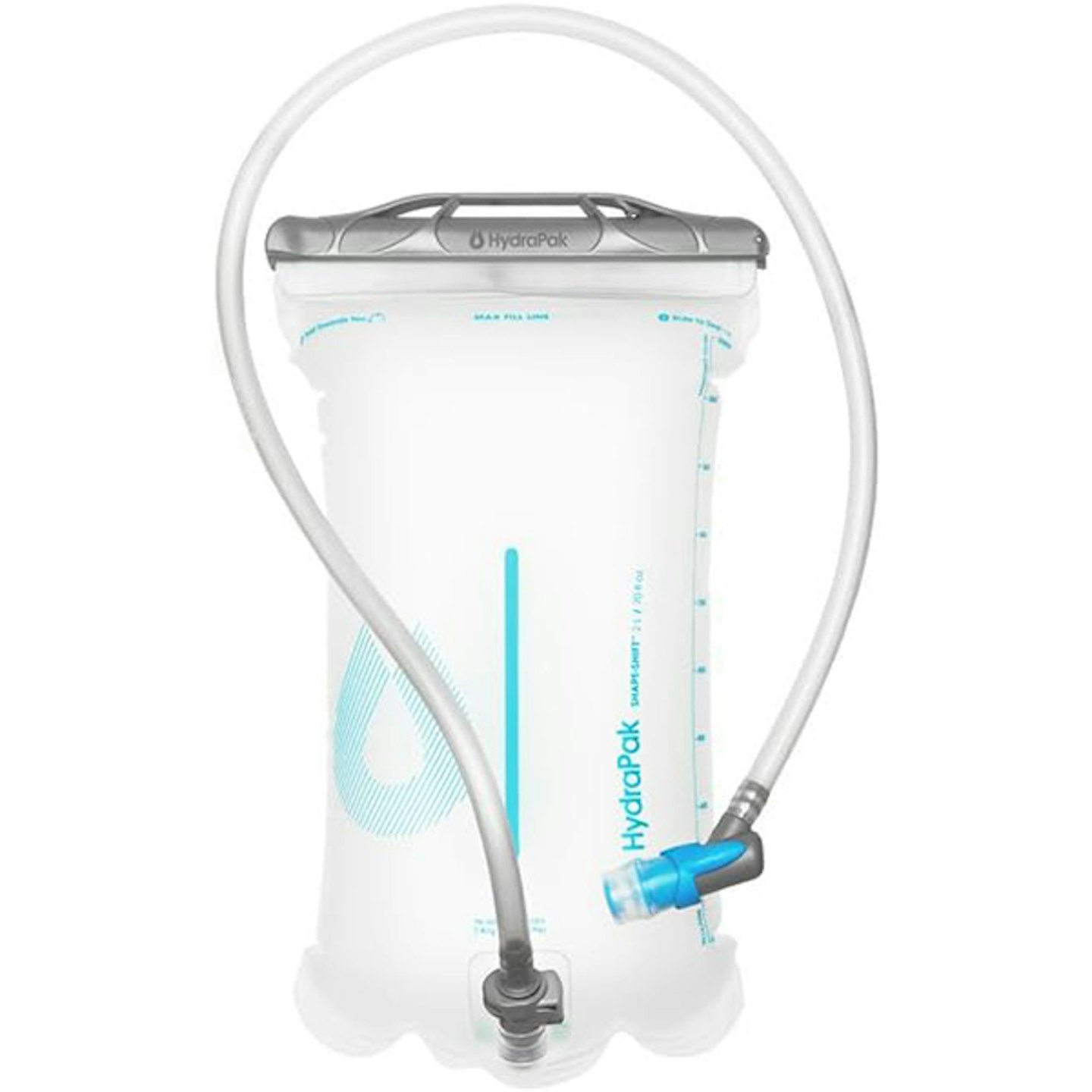As trail runners, we all understand the importance of our pack. It’s got to feel just right both in terms of fit and weight, but also ease of access.
Especially because not all of us are blessed with gymnastic skills on the move. We don’t want to spend ages contorting at the hip and fiddling around looking for that all-important water flask, and we especially do not want a bag that requires stopping and taking off just to fish out an energy gel.
Front pockets, hip stashes, somewhere for a phone and, of course, a system for keeping hydrated on the move. And preferably enough storage to carry a running jacket and some sweets. Those are the qualifying factors for our shortlist – good features and an even better fit is what wins around here.
Our Shortlist
Scott Trail TR 10 – Best in test
Decathlon Evadict 10 – Best Value
Osprey Duro 15 – Most storage
Deuter Ascender 7 – Best for ultra runners
Inov-8 Venturelite 4 Vest – Best minimalist pack
Vaude Trail Spacer 8 – Best run/hike hybrid pack
Ultimate Performance Leader Race Vest – Best for competitive runs
Montane Gecko VP+ 5 – Most comfortable ride
The North Face Summit Run 12 – Best vest
We’ve selected the best hydration packs for a range of running styles, from short and fast woodland jaunts to monstrous mountain ultras. So, keep that in mind when you make your final choice. Just as you'd ensure you had the best ultra running shoes for 150km race, you'll want to find the best pack for your style of run. Sprinting over Skiddaw in the pouring rain in February has very different storage requirements than a leisurely June jog… for most of us anyway.
The best trail running hydration packs in detail
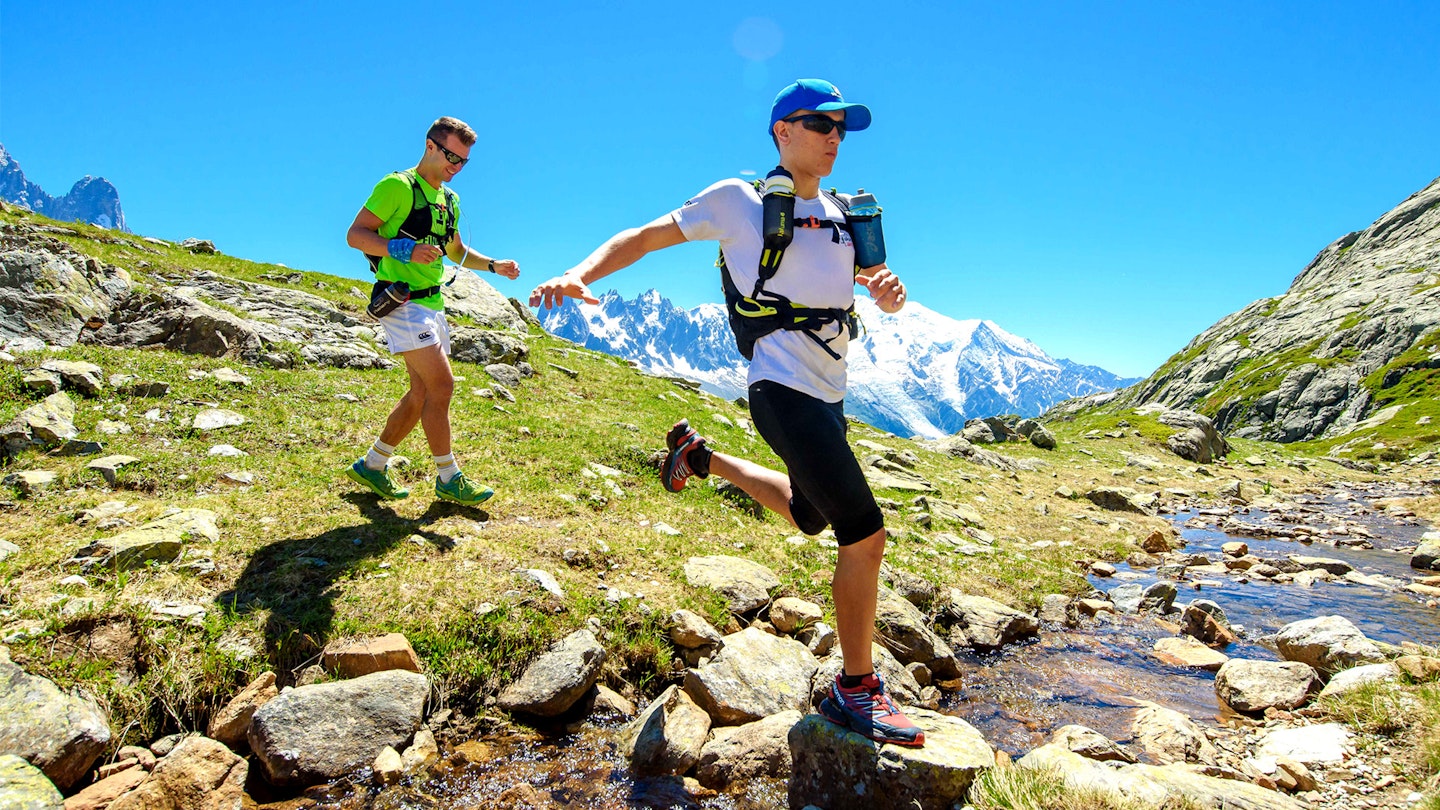
Best in test
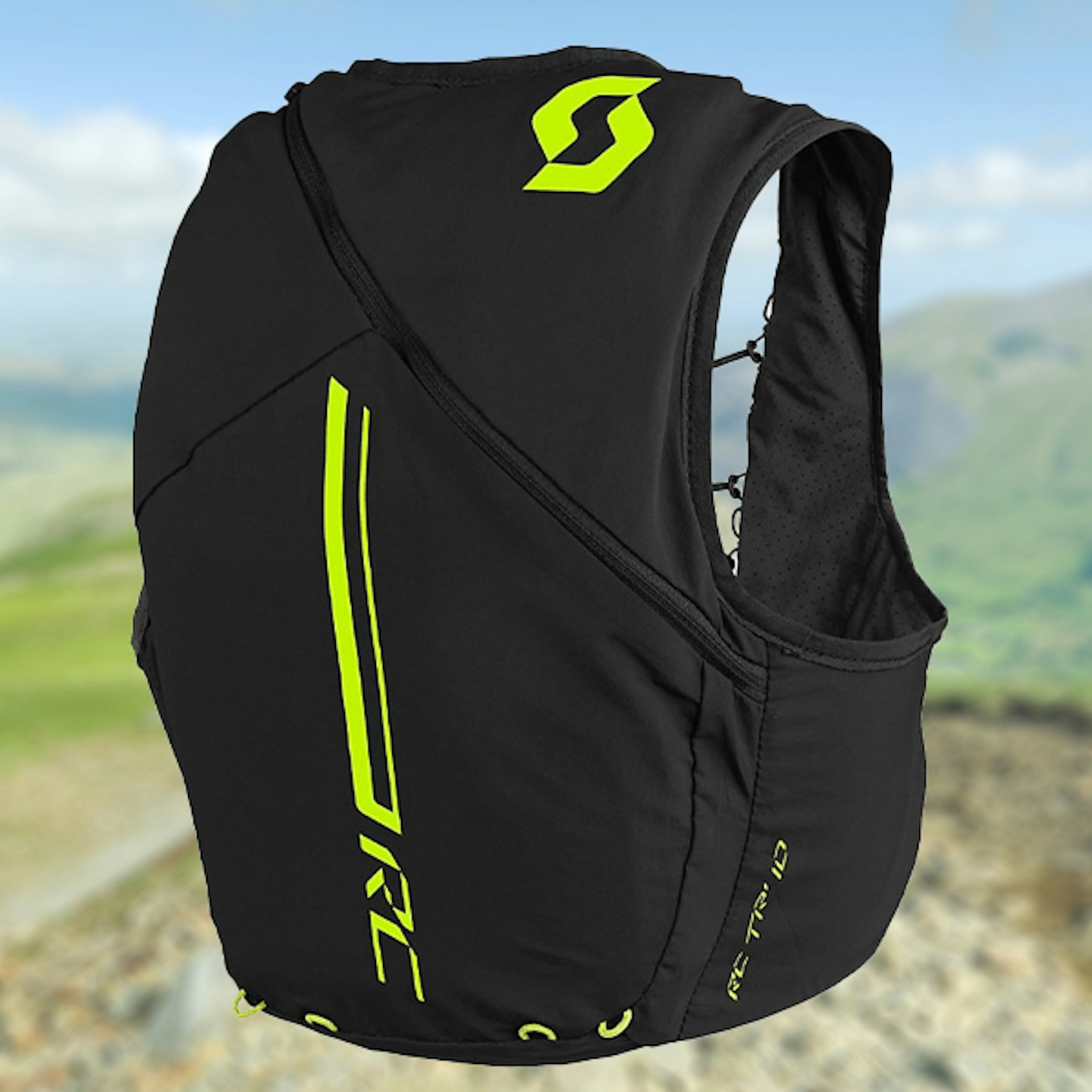
www.sportsshoes.com
Description
First things first, this bag looks great. It's also fantastically light, weighing in at only 110g (less than the two bottles that come with the pack). Surprisingly at that weight it also has a 10 litre capacity bladder pocket which, if fully filled with water, would obviously add some heft. But a bladder isn't even required since the flexible TR 10 also has room for flasks.
Speaking of which, there are no less than 6 pockets on the front of this bag. They follow the standard pattern; two at the top for Gels, Middle two reserved for your 500ml flasks. The flask pockets come with fixation loops so if you do something silly like fall into a stream whilst running, the bottles won't go astray.
Two lower pockets are for items such as gloves, headscarf, sweets etc. The material here is said to be stretch fabric but there's not a huge amount of give; we'd prefer an elasticated material to keep things slightly more secure. This is only a minor gripe however.
If six front pockets weren't enough, you have zip pockets on either side of the waist and they are large enough to stash a mobile phone securely. No space is unused on this pack, its ergonomic design really does shine. The pack fits great and the two straps across the chest are easily adjusted.
This bag will catch the eye for those looking for a light race pack and will also accommodate a longer run across a day. It might not be the cheapest bag but it covers so many aspects for trail runners it could be the only one you need.
Pros
- Ultra light weight
- High carrying capacity
- Design that looks and feels good
Cons
- Pockets aren't super spacious
Best value
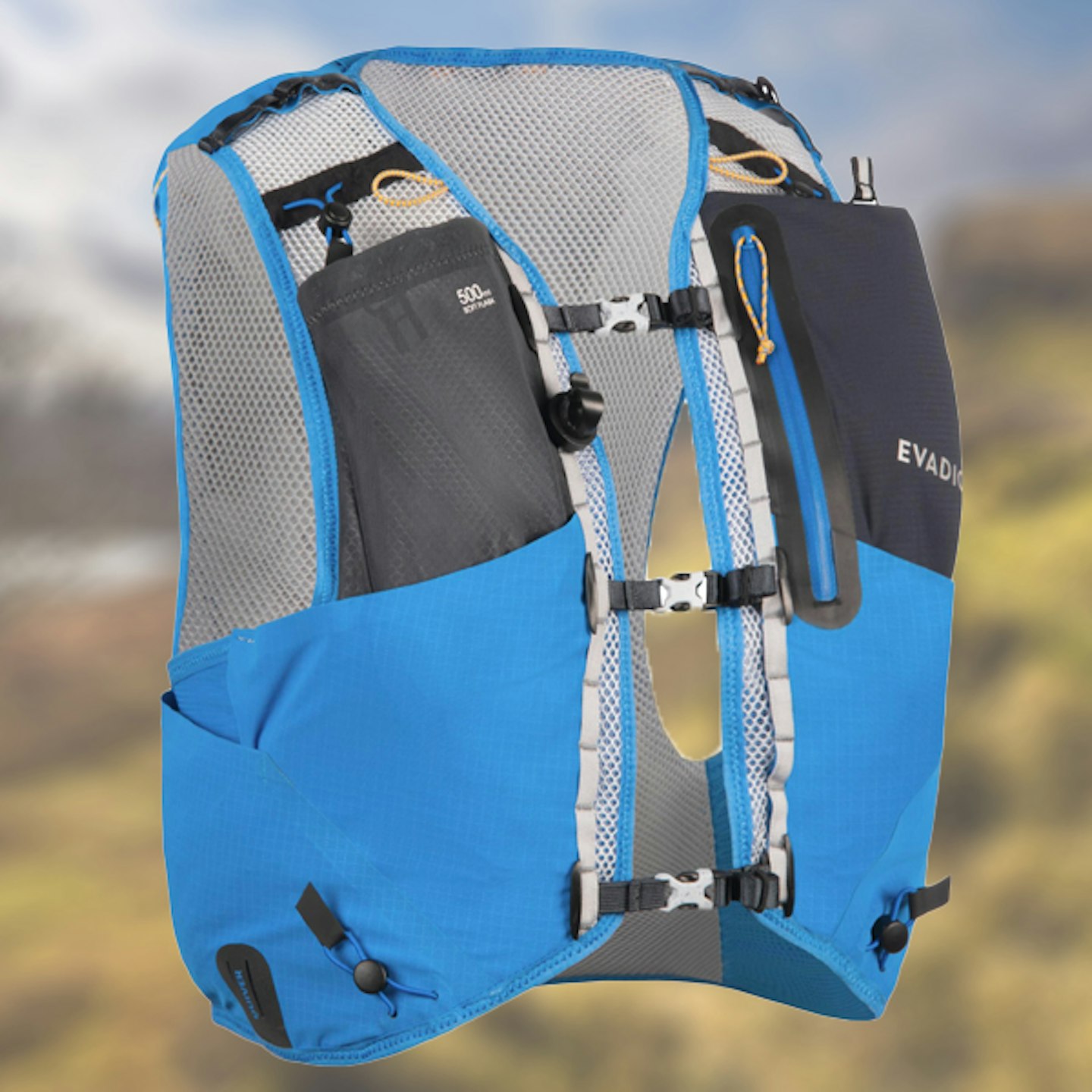
www.decathlon.co.uk
Description
Decathlon are back with yet another highly impressive offering for tremendous value. The Evadict 10L can compete with many of the top names in trail running, and we highly recommend picking it up if you're new to the scene. It sits comfortably, and we love that the chest straps have several adjustment points to accommodate a wide range of shapes and sizes.
The bag comes with both 2x500ml soft flasks and a 1L bladder to suit either preference. Or, we suppose, to suit runners who like a lot of water. The flasks are uniquely designed with a wider bottle top to make it easier to drop in hydration tabs or powders. This works well, though there's nothing to stop you switching them out for your preferred flask instead. Bonus points for the elastic cords at the top of the sleeve's to secure the flasks in place.
The two mesh side pockets are great for storing food or gels and easily accessible while on the go. We also found the water-resistant phone pocket to stand up well against the rain and easily accommodate big smart phones. The Evadict also comes with a whistle that can be attached at multiple points, as well as a spacious rear mesh pocket.
With a generous amount of space, comfortable fit, and easily reached side pockets, this pack does just about everything right.
Pros
- Accessible pockets
- Multiple hydration options
- Exceptional price
Cons
- Construction isn't super durable
most storage
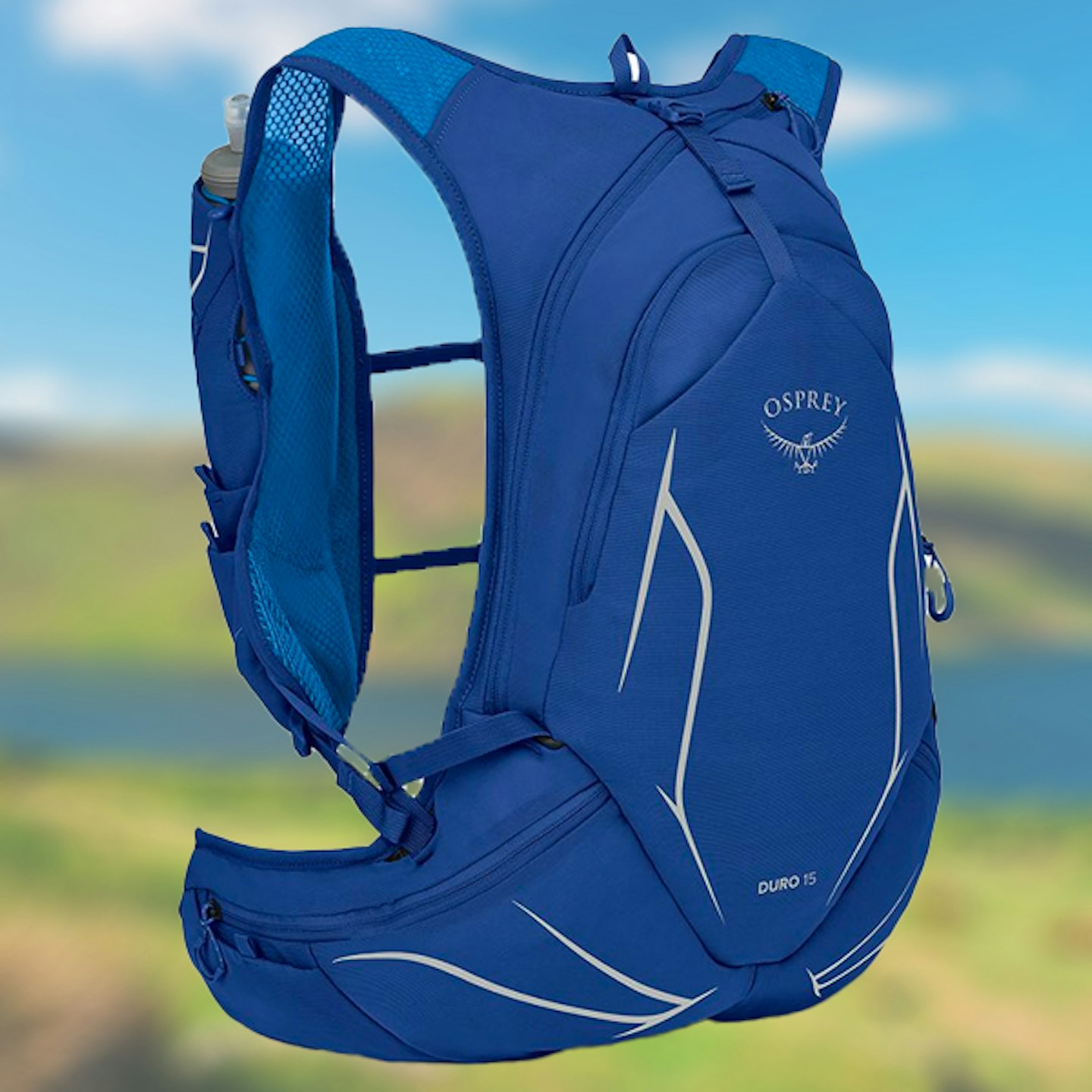
www.ospreyeurope.com
Description
If you like to carry a lot, then you must - must - consider this beauty. It’s a premium pack with the storage capacity of a super-tanker, such is the number of pockets and the size of the main compartment. The Duro 15 our go-to for long haul runs that are more about exploration and convenience rather than straight pace.
Yes, there are lighter, racier models out there but it’s difficult to fault the ease of access and the options you have for storage of key items like wallets and phones. Indeed, there are eight zipped and five mesh pockets meaning you can reach for jackets, thermals, maps or indeed anything. All are within reach on the move so top marks there; ditto in the marks department for the price.
Pros
- Super comfortable straps
- A Rolls-Royce feel and look
Cons
- Too much storage. Some runners might find it tough not to take everything because you can
Best for ultra runners
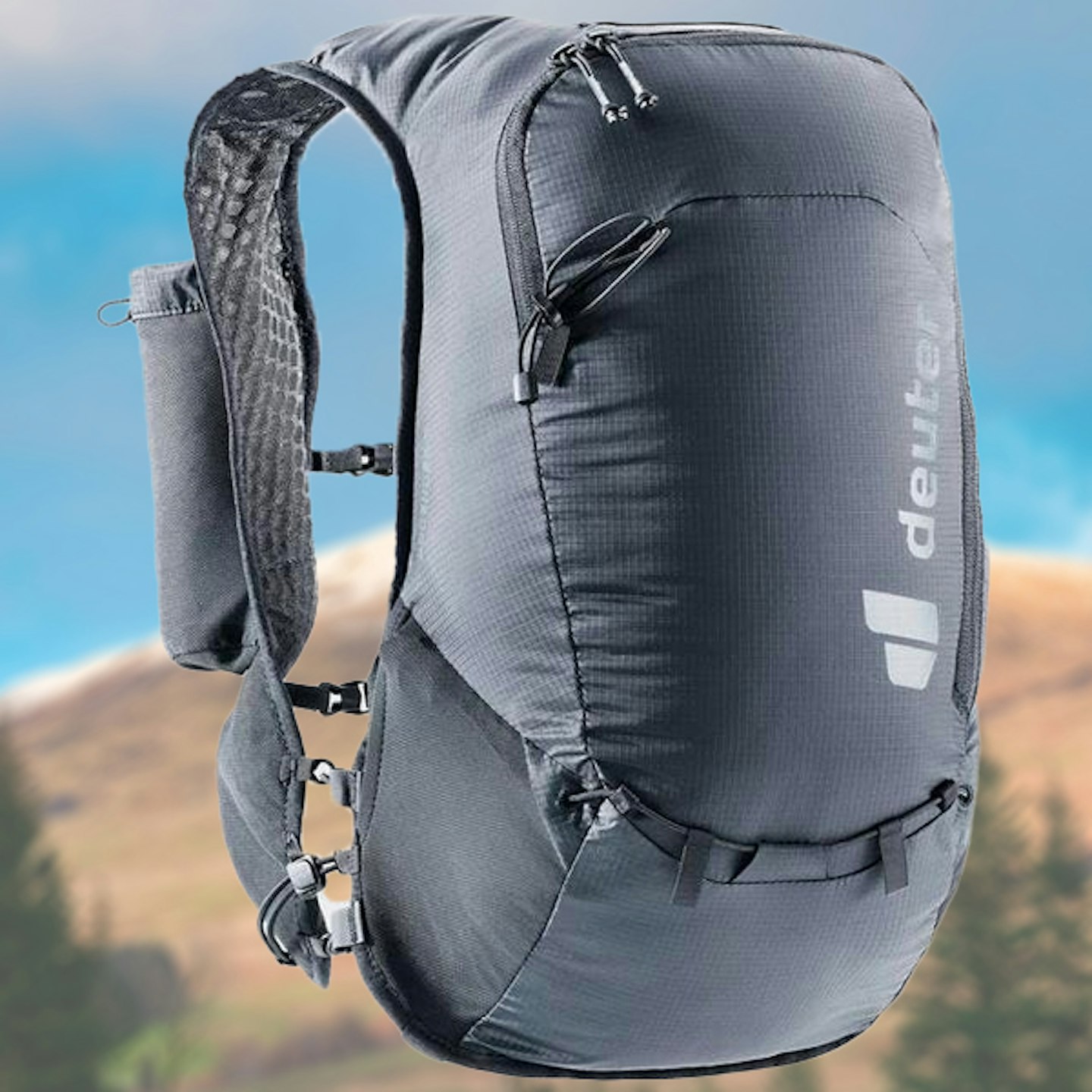
www.sportsshoes.com
Description
This was our tester's pack of choice for a recent mountain marathon; that should tell you all you need to know about storage capacity and fit. The Ascender 7 weighs in at 315g, which isn't heavy but isn't the lightest in this list. However, this pack compensates by sporting an impressive range of competitive tech.
The lateral compression straps at either side can be adjusted to make this pack fit flush against you like a tight vest. This minimises any bouncing around and provides a comfortable, sleek feel. The Ascender also boasts a lot of accessible storage options from the mesh side pockets for food and phones to the GPS pocket in the shoulder strap.
We're also thrilled to report that this backpack is 100% recycled and Bluesign certified thanks to Deuter’s policy of environmental protection and sustainability. For these ethical and durable materials, we think the Ascender 7 is great value for any serious trail runner.
Pros
- Great sustainability
- Fits well for long runs
Cons
- Not the lightest choice
Best minimalist pack
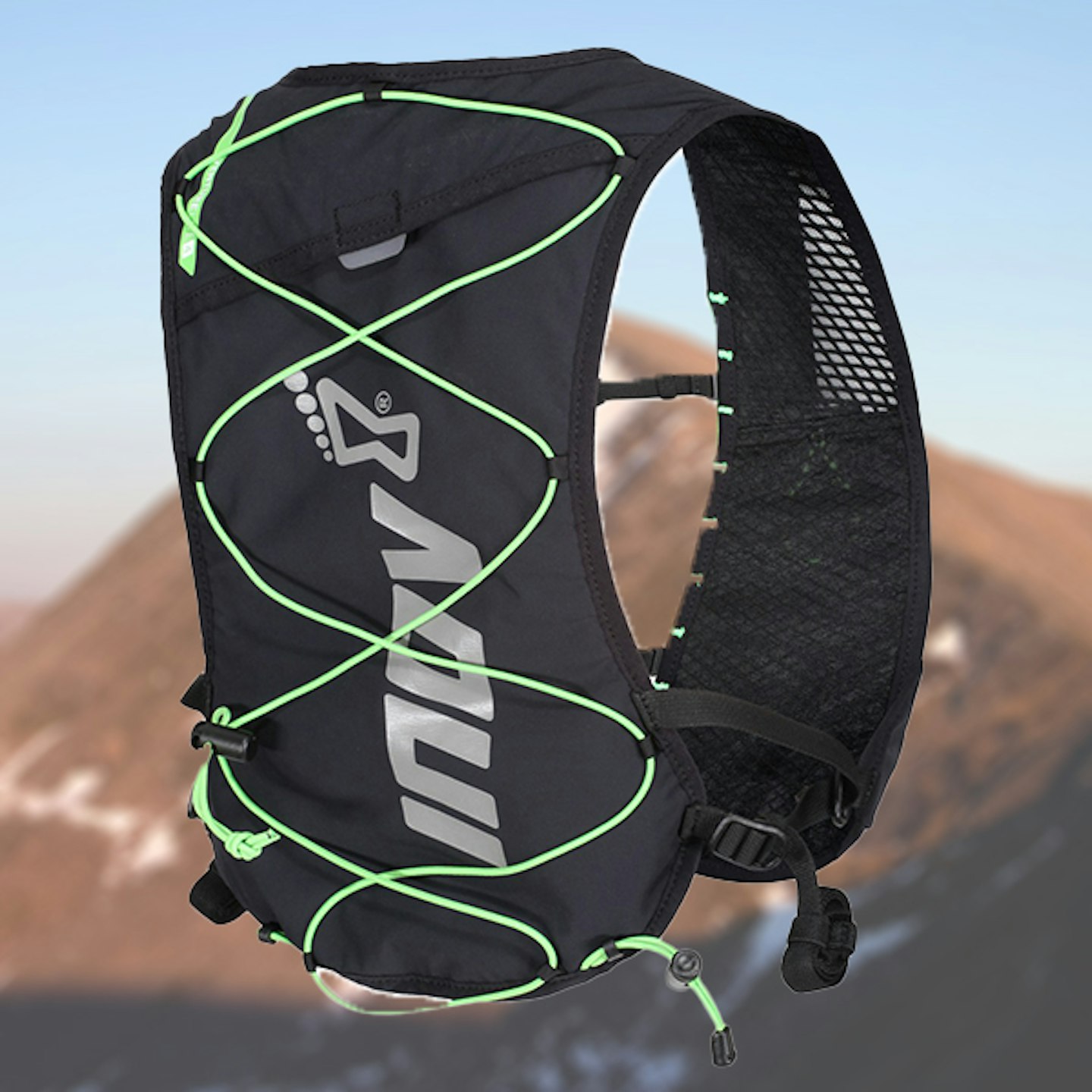
www.inov-8.com
Description
Yes, this is a pack, but one that is from a minimalistic world, hence the name ‘vest’. The Venturelite 4 is soft to the touch, very breathable and the fit is super secure. Designed very much with performance in mind, it’s the type of pack you’ll opt for on those long, hot summer days.
Surprisingly it does have a four-litre capacity so carrying a lightweight jacket and a hat is no problem, while the storage capacity is equally amazing – two 500ml soft flasks, room for a reservoir and even your poles. There are no zips – the pockets are of the stretch variety, capable of storing a moderate sized smart phone – and weight is minimal; just 145g. So too is the price.
Pros
- Minimalist approach great for racing
- Super lightweight
Cons
- Tough to pack too much in
Best run/hike hybrid

www.alpinetrek.co.uk
Description
This is technically a hiking backpack, but it's designed in the style of a running vest and may be used for both. It has familiar zipped and stretchy pockets, a sternum and chest strap, hydration bladder compatibility, and a compression system. The Spacer 8 also looks fantastic, which makes it an appealing choice for some.
When it came to proper testing, we weren't able to cram as much stuff into this pack as we were hoping. With no flask pouches, you'll need to invest a decent amount of space in the main compartment to a large bladder.
However, the three lockable pockets on the left shoulder strap worked great for stashing gels and money. The phone pocket on the right shoulder was fine too. We were particularly impressed by the compression belt, under which you can easily tuck a jacket or top if you want to switch up layers on the move.
The Trail Spacer 8 does feel great to run with, though, and we admire how comfortable this pack is while stuffed full. But, considering the lack of included bladder or flasks, the RRP is a bit hard to swallow.
Pros
- Secure straps
- Comfortable when full
Cons
- Falls short on features
Best for competitive running
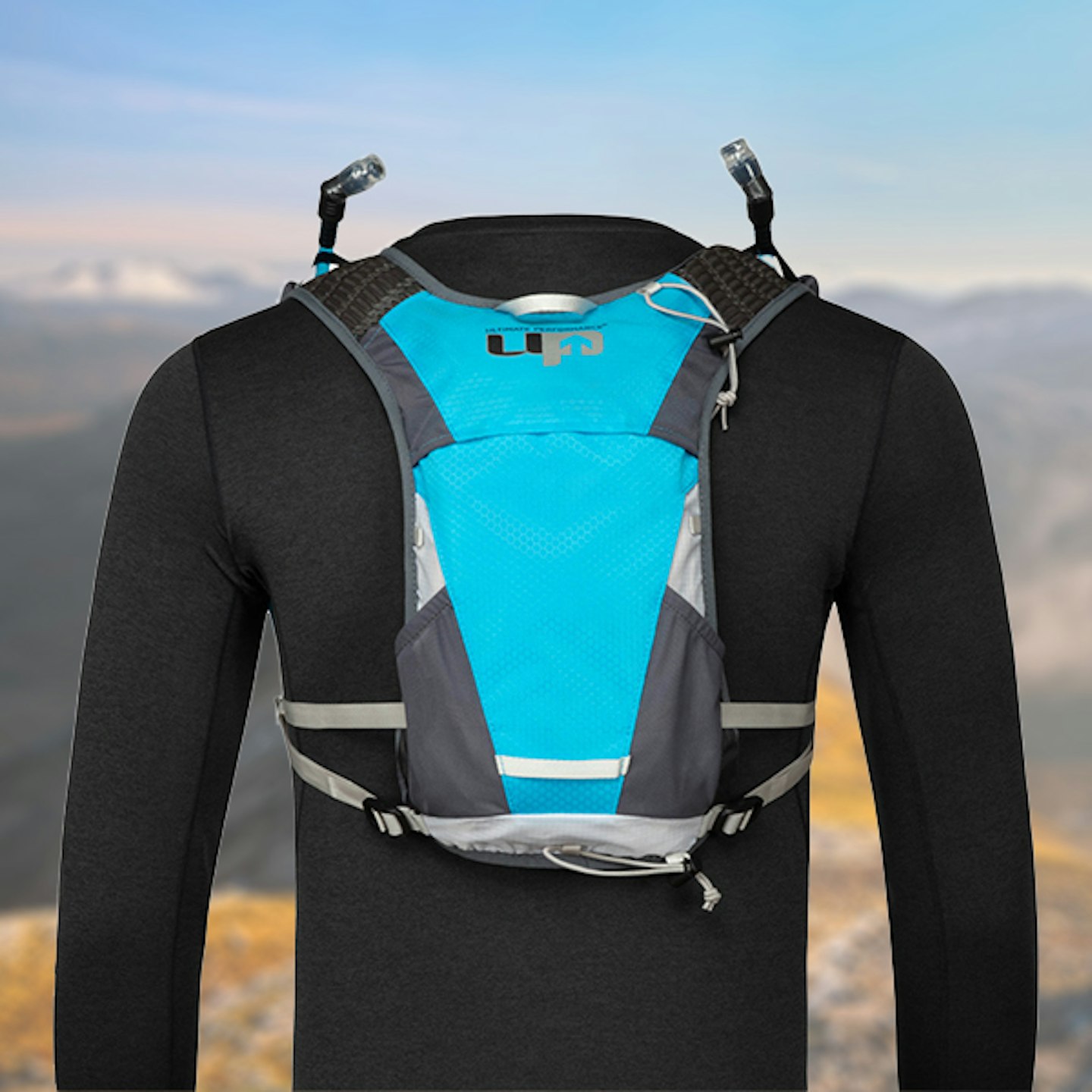
www.sportsshoes.com
Description
The UP pack sells itself for race day. It is impressively light, coming in at a mere 205g, and it's super secure against your back. You'll find a thin, ventilated waist strap which compliments the two minimalist adjustable straps across the chest. This does lead to an initial number of adjustments on your first couple of runs so make sure to factor this in.
Pockets and placement are always something each individual runner fusses over. With 5 front pockets you have options. Two specifically for the 500ml flexi-straw drinks bottles that come with the pack, two small stretch pockets for your gels and a zip pocket on the left, enough space for your phone. The pocket is designed with a single finger zip so no need to stop on your race. We loved this feature; brands take note.
The rear storage pocket will allow for a bladder or doubles as your coat storage and 2 other small rear stash pockets will fit a gel easily. These aren't that easily accessible, and you will need to stop and take the bag off if you want to grab a running jacket from the main compartment.
There is a very comfortable wicking air mesh-back to the pack and shoulders which feels great on runs. Overall, an outstanding performer and a great choice on a hot day.
Pros
- Great ventilation
- Highly visible
- Lightweight
Cons
- Inaccessible rear pockets when on the move.
Most comfortable ride
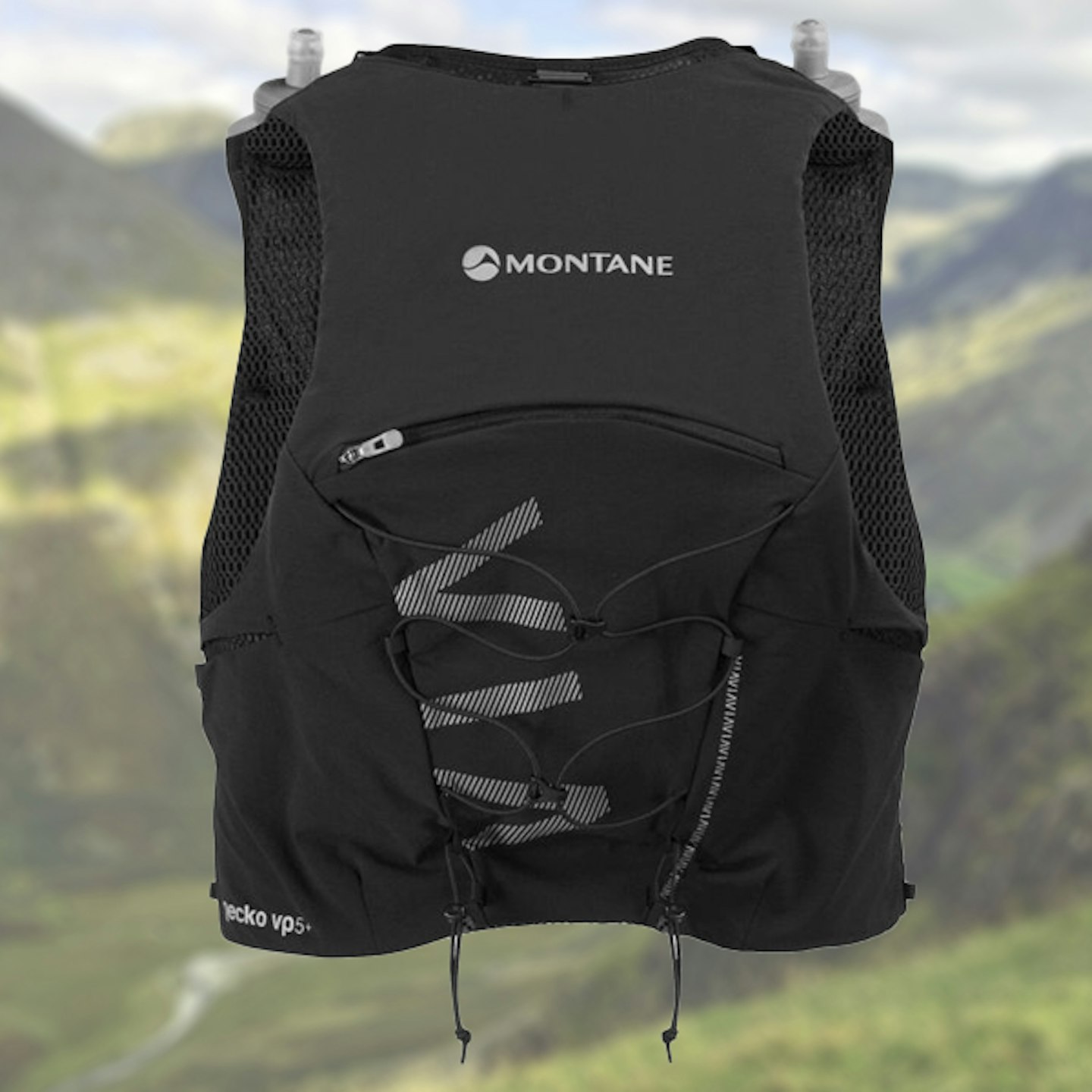
www.cotswoldoutdoor.com
Description
The Gecko VP+ 5 has a lot of features and an ungodly number of pockets. The two front 500ml flask pockets are roomy and allow easy access to your water. They then transition into two nicely spacious zip pockets underneath. You can easily stash a phone and some gels in these, and they feel super secure.
You'll also find a couple of stretchy stashes on either side, just above your hips, which are ideal for any little extras you want to bring along (or for shoving wrappers into, which is very useful). At the waist running towards the back are two pockets that are deep and easy to access on the go. With enough space to safely secure a thin coat, headtorch, hat or gloves. Very practical and it reduces the need to take the bag off whilst running.
The rear pouch itself has an internal pocket for keys / cards and a clip to attach keys. At around 5 litres you can carry enough clothing and food for a long day of running. It is closed using a slip clip which will stop anything shaking out. Three chest straps hook into place via 9 loops which can be moved to find what works best for you. Adjust to taste using the stretch cords.
Comfort-wise, the bag once adjusted is seamless. It moves with you but not against you. The straps across the chest might occasionally need pulling tight again but that's a minor issue. With so many active pockets at the front and waist you can get through your run whole without having to consider unclipping and taking the pack off.
Pros
- Lots of diverse storage
- Highly adjustable chest straps
Cons
- Straps can loosen over time
Best vest
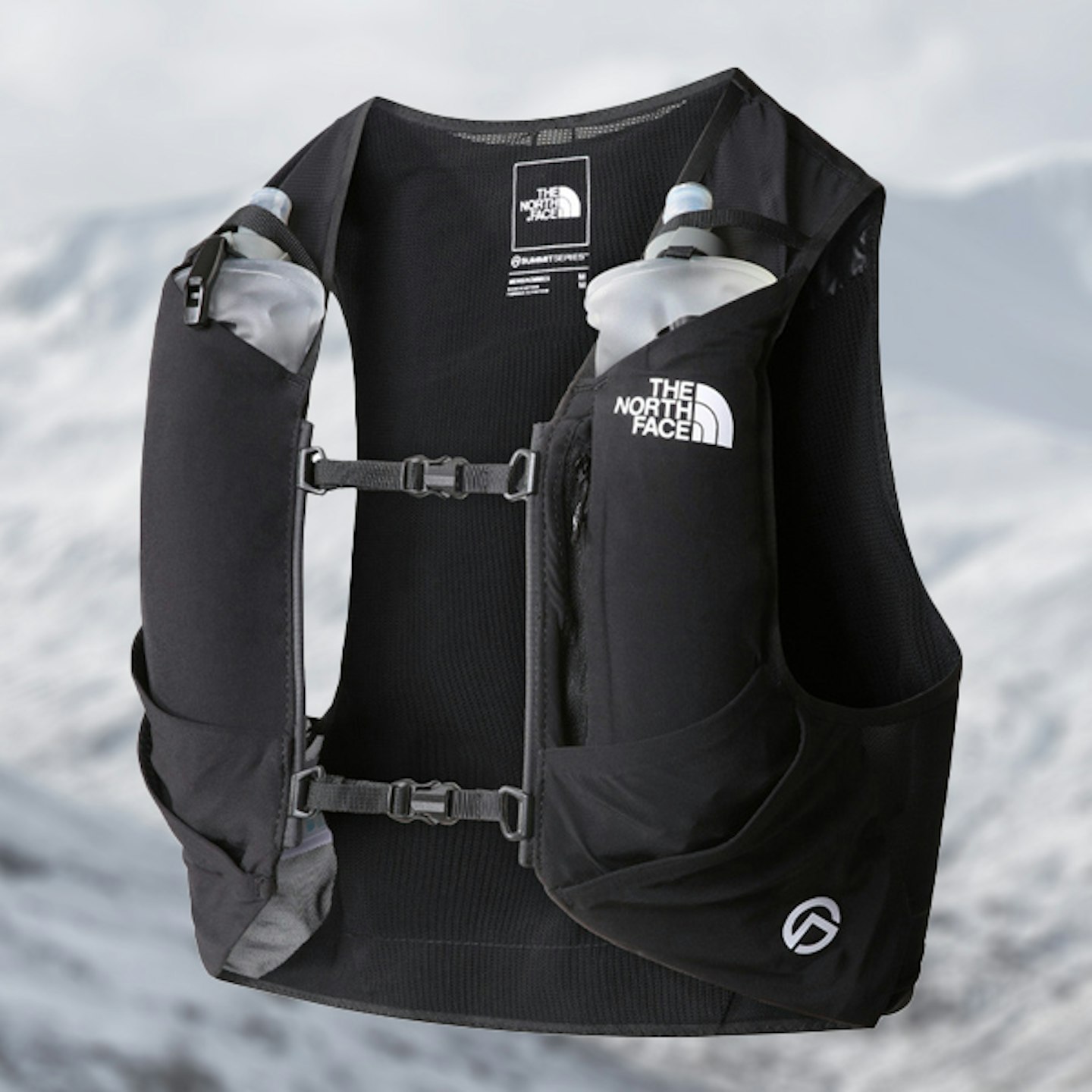
www.thenorthface.co.uk
Description
The stretchy material that largely comprises The North Face’s Summit Run 12 makes it a unique pick. Opting for a slightly unusual approach, this pack hugs around your torso with a light mesh which is breathable and accommodating for movement.
This choice, however, comes at the expensive of a tighter, more secure fit. You may find the vest bounces around a bit if you aren’t lucky enough to match its dimensions perfectly. Still, the Summit Run is comfortable to wear and has a decently large back compartment, though we were quite disappointed by the other pockets.
Two 500ml flasks sit securely on each strap thanks to a leash system – though this isn’t super easy to use. A whistle is attached inside one flask pocket which is a nifty addition. If your phone is particularly large, you’ll have trouble squeezing it into the zip pocket which sits behind the flasks. There are a couple of quite sleek diagonal pockets for gels.
All in all, a comfortable pack that looks flashy (if you get it in black – we’re less keen on green) and fits snugly. Usually.
Pros
- Comfortable, malleable material
- Secure flask fit
Cons
- Can bounce around a bit
- Pockets aren't very accessible
What to look for when buying a hydration pack
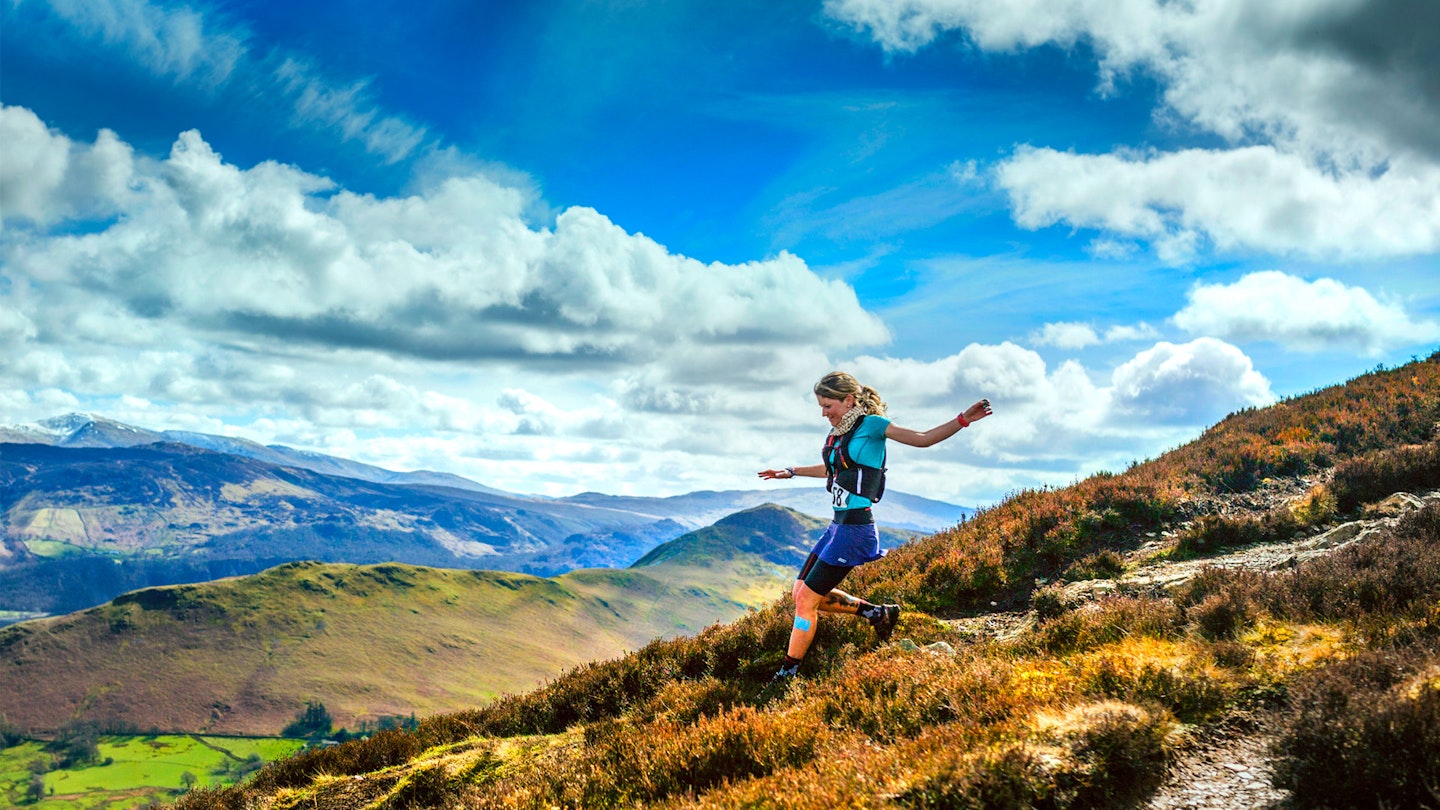
Fit - Some models offer men’s and women’s versions which are important, but above all, you need to consider how the pack fits on your back and what is being offered in terms of support. How many straps are there? Do they easily fit around your waist and chest to minimise movement at pace?
Capacity - For longer races, you’ll need room for a variety of essentials ranging from a jacket, and an extra layer to medical kits and more. For shorter runs on your own, it’s possible you won’t need so much.
Storage - How many pockets are there? How many bottles can it hold? Is there room for your phone, gels, or money? All are offered to varying degrees, but some runners might also need pole storage facilities. And of course, consider ease of access on the move. You don’t want to be scrabbling around for your jacket on a steep ascent into the clouds – you need to be able to access it all instantly on the move, at pace.
Hydration capacity - Remember, water does weigh 2lb per litre, so the larger the capacity the more weight you’ll carry. Around two litres is probably the best compromise capacity for weight and speed.
Choosing your hydration system
When it comes to actually carrying your water, there are two primary approaches: flasks and reservoirs. You may have heard a reservoir referred to a bladder, Platypus, or Camelback (those two are actually brands of reservoirs). It's a flexible water storage container that is usually placed in the main compartment of your pack. It is usually made of durable materials such as BPA-free plastic, and is connected to a drinking tube (or flexi straw) which feeds out of your pack, attaches to one of the pack's arms, and then sits nearer the front of the pack in prime position for sipping as you run. This will typically be connected to a bite valve.

Ideally, you'd want your reservoir to have a vacuum seal, which means once you've sucked the initial air out of it via your straw, there's much less bounce and no audible sloshing about of water while you move. A bladder will have different ways to refill, but all must be watertight to work effectively. Some have a large top opening, like you'd see on a sandwich bag, while others have a smaller, circular screw-to-secure opening. The former is easier to refill and clean as its larger, yet the latter may be less likely to leak.
If a big bag of water isn't your style, then soft flasks are a great alternative. Unlike traditionally rigid and bulky water bottles, soft flasks are collapsible and typically made of lightweight, flexible materials such as TPU (thermoplastic polyurethane) or silicone. Soft flasks have less capacity than a reservoir, but they're much more versatile when it comes to placement and use. They're easy to access and refill on the go. Plus they're lightweight, compact, and the flexible body compresses as you drink to avoid any sloshing.
Top tip: Keep your soft flasks in the freezer to prevent mould and extend their lifespan.
Hydration Pack Glossary
Bite valve: Connected to the end of the drinking tube, this nifty feature is a staple for hydration packs as it allows runners to get at their water hands-free. The valve won't let any water pass through unless you bite or squeeze it, preventing leaks or spills during a run
Baffle: A partition or divider within the reservoir that helps maintain the shape and stability of the bladder. It prevents the water from sloshing or creating a large bulge, improving the pack's balance.
Yoke: The yoke refers to the portion of the hydration pack that covers your shoulders and upper back. It is typically adjustable and helps distribute the weight of the pack evenly.
Back panel: The padded area on the back of the hydration pack that rests against your body. It provides cushioning, comfort, and ventilation, allowing air to flow to help keep the back cool and minimize sweat.
Compression straps: Adjustable straps located on the sides or front of the pack that allow you to compress the pack's volume and stabilise its contents. They help prevent the water from sloshing around and maintain a snug fit.
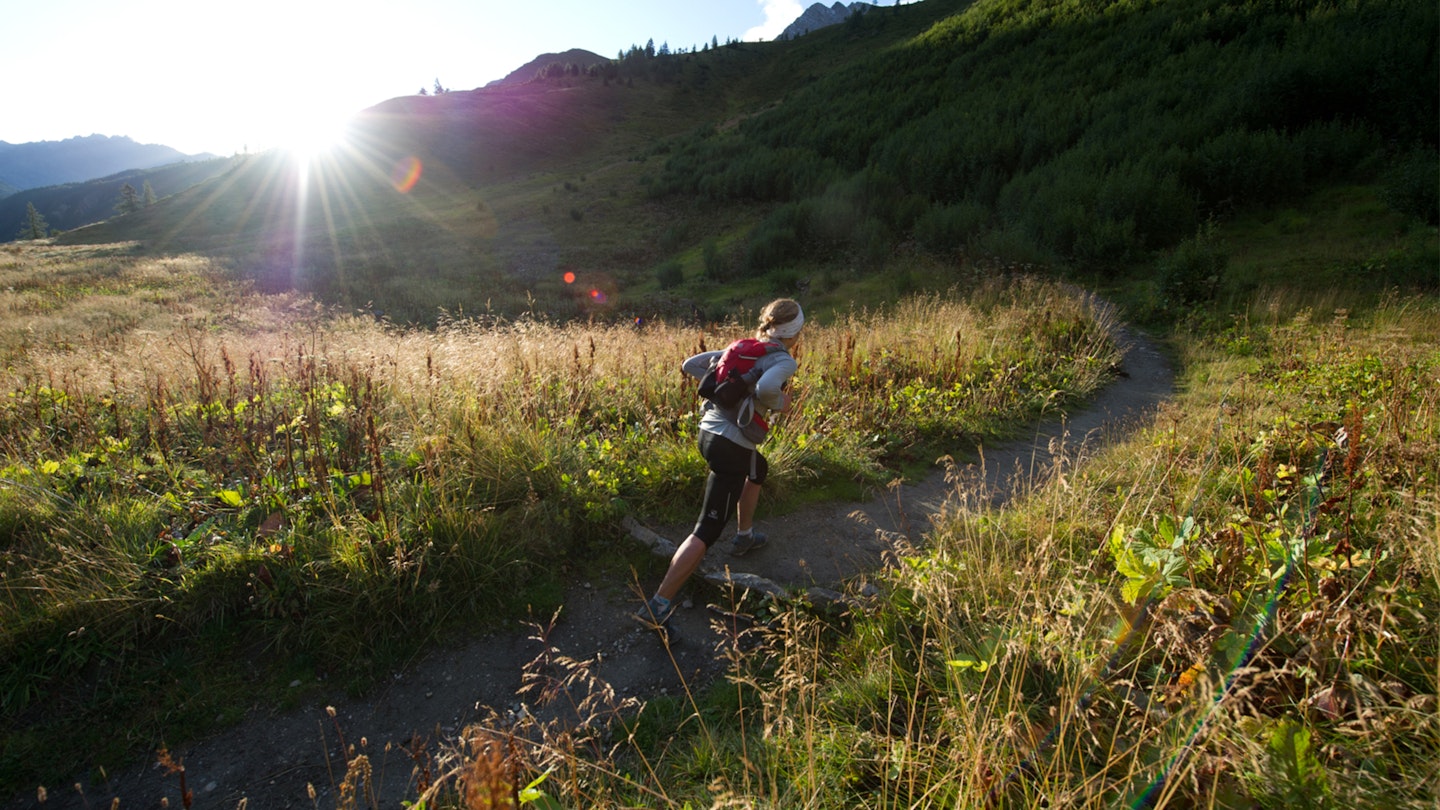
Extra bits for your next run
Recommended Hydration Reservoir
Pros
- Durable PFC-free construction
- High capacity for long runs
- Portable, easily fits most daypacks
- Removable parts for easy cleaning
Cons
- Bite valve doesn't come with a cover
Recommended Soft Flask
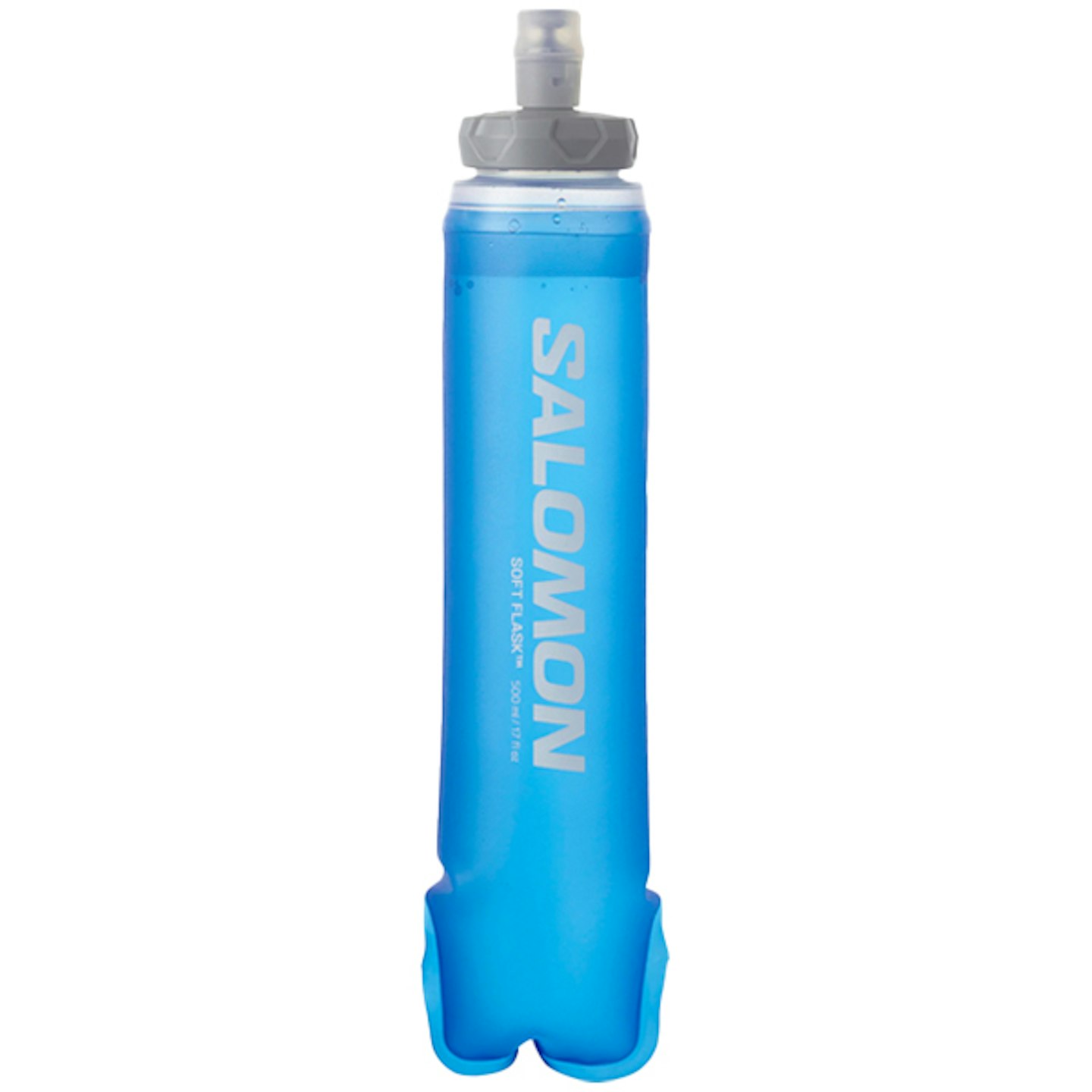
www.salomon.com
Pros
- High-flow valve for easy quick drinking
- Lightweight construction
- 42mm cap wide enough for hydration tablets
Cons
- Not insulated to maintain cool temperatures
